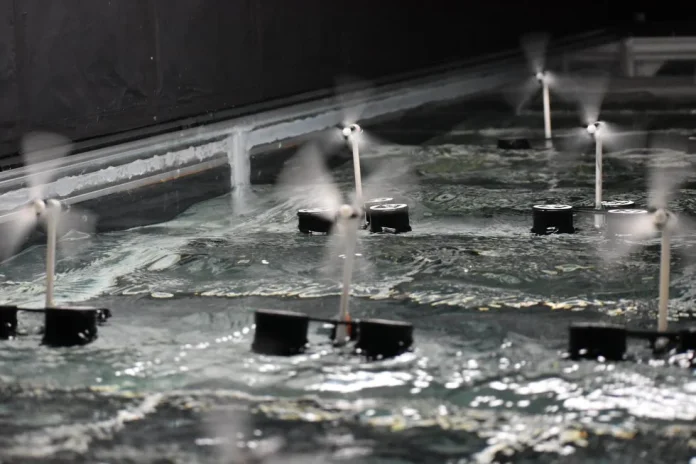A collaboration between researchers from Johns Hopkins Whiting School of Engineering and Portland State University (PSU) is aiming to help unlock the potential of floating offshore wind farms by improving the understanding of wind-wave-turbine interactions.
The collaboration says, if not accounted for properly, these interactions can reduce the power output of a group of wind turbines.
The project is developing a new method for enhancing the accuracy of large eddy simulations (LES), a mathematical computer model that depicts the wind field within floating offshore wind farms, using a wind tunnel/wave tank facility at PSU. By integrating both computational and experimental methods, the team aims to develop more accurate tools for the design and optimization of wind farms in the deep ocean.
“One of the challenges to floating offshore wind farms is we don’t have test beds,” says project co-principal investigator Dennice Gayme, a professor of mechanical engineering at the Whiting School of Engineering and member of the Ralph O’Connor Sustainable Energy Institute leadership council.
“You can’t go out to sea, build a test windfarm, and see how it performs. It’s just too expensive. Most studies focus on LES simulations or lab experiments and don’t look at how to bridge the gap between the two, which is key to developing a complete understanding of the system.”
The project is the first to receive funding through the U.S. National Science Foundation and the Department of Energy’s Wind Energy Technologies Office’s partnership in wind energy.
Turbines on platforms that move with the water make it difficult to design wind farms in a way that maximizes their energy potential, the team says. Computationally, a challenge to creating LES for effective wind farm design is accurately reflecting wind flow over always-moving waves with multiple wavelengths and complicated shapes.
The project is jointly supported by NSF and DOE through awards to Johns Hopkins University and Portland State University.




